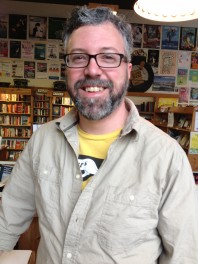 In much of the country, the month began with roaring winter storms, but that wasn’t the case here. Our early March was a lamb, so gentle and solicitous that it brought mint jelly with it and invited Northwesterners to tie on a bib. I accepted the offer and bit into the fair weather with gusto, hitting the trails and boardwalks at the Nisqually National Wildlife Refuge in south Puget Sound. This protected estuary is home to all manner of creatures—my hiking buddies and I glimpsed deer and coyotes hidden in the tall grass—but it’s the birds that are the big draw. Bald eagles, horned owls, great blue herons, and cackling geese compete with smaller, brighter-plumed redwings and wigeons for the attention of amateur gawkers and long-lensed professional photographers. It’s a quietly spectacular show, one that inspires me to do a bit of research before I take it in again. There are many good options available, but for some inexplicable reason I’m drawn to The Crossley ID Guide, so a copy of that will be in my pack on my next
In much of the country, the month began with roaring winter storms, but that wasn’t the case here. Our early March was a lamb, so gentle and solicitous that it brought mint jelly with it and invited Northwesterners to tie on a bib. I accepted the offer and bit into the fair weather with gusto, hitting the trails and boardwalks at the Nisqually National Wildlife Refuge in south Puget Sound. This protected estuary is home to all manner of creatures—my hiking buddies and I glimpsed deer and coyotes hidden in the tall grass—but it’s the birds that are the big draw. Bald eagles, horned owls, great blue herons, and cackling geese compete with smaller, brighter-plumed redwings and wigeons for the attention of amateur gawkers and long-lensed professional photographers. It’s a quietly spectacular show, one that inspires me to do a bit of research before I take it in again. There are many good options available, but for some inexplicable reason I’m drawn to The Crossley ID Guide, so a copy of that will be in my pack on my next  excursion.
excursion.
I’ll also be bearing the knowledge of how fragile and ephemeral such opportunities are. While the Nisqually Refuge is a success story, a thriving stretch of territory reclaimed for nature, there are dwindling numbers of places like it. Sorting through the photos from my walk, I remembered the cautionary account of another wetland that appears in The Moth Snowstorm by Michael McCarthy:
Saemangeum in South Korea: the biggest destruction of an estuary that has ever taken place … 40,000 hectares … which at various times of the year hosted so many waders that it was by far the most important shorebird site in Korea … perhaps in all of Asia. It was phenomenal. It was one of the wonders of the bird world. Now it is gone, snuffed out by a giant engineering vanity project, the building of the world’s biggest sea wall; a whole ecosystem annihilated. And standing here gazing upon it, at what it has become, I find welling up in me an unaccustomed emotion which I register with shock as rage.
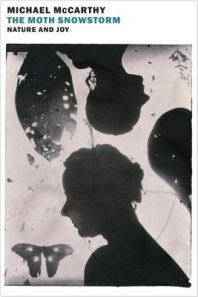 McCarthy’s memoir/manifesto is at times a painful read, laying out the brutal extent of the environmental losses we’ve suffered, but it’s also an exhilarating one. Some years ago I wrote about how rare it is to find non-fiction that rises to the level of literature. This is one of those rare books. It speaks with an impassioned, personal voice, convincing with its argument and stunning with the beauty of its writing. You’ll leave it with a renewed sense of wonder and a desire to improve your surroundings, not because it’s the right thing to do, but for the sheer joy of it.
McCarthy’s memoir/manifesto is at times a painful read, laying out the brutal extent of the environmental losses we’ve suffered, but it’s also an exhilarating one. Some years ago I wrote about how rare it is to find non-fiction that rises to the level of literature. This is one of those rare books. It speaks with an impassioned, personal voice, convincing with its argument and stunning with the beauty of its writing. You’ll leave it with a renewed sense of wonder and a desire to improve your surroundings, not because it’s the right thing to do, but for the sheer joy of it.
Of course, some people—better souls than I—don’t need to read a book to find that wonder and desire. They live with it every day and write their own books about it. Among the first to do this was Aldo Leopold, the early environmental advocate whose classic collection A Sand County Almanac will turn sixty next year. His essayistic journey through the seasons on his farm in central Wisconsin had a seminal influence on the conservation movement akin to that of Thoreau’s Walden, and his homestead is 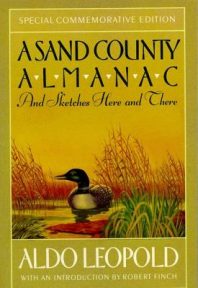 today a National Historic Landmark.
today a National Historic Landmark.
Leopold was by no means alone on the land. He lived there with his wife and five children, who came to share his deep ecological awareness—all of the Leopold offspring had notable careers in one field of environmental science or another. Youngest daughter Estella brought the family tradition to the Northwest, becoming a professor at the University of Washington in the 1970s. She shares an appealing child’s-eye perspective in her memoir Tales from the Leopold Shack, and elaborates in an interview:
It was fun being out in the shack. There was so much to experience. We witnessed seasonal changes—birds migrating, the succession of plants. We learned about the ecosystem, like which plants were invasive versus native, which plants deer liked and which ones the rabbits ate. We planted hundreds of baby pines and prairie plants. But it never felt like work, even when we were working to improve the Shack or managing and rehabilitating the land …
I hope people today understand the importance of giving our youth close, immersive experiences in nature. Having a family cabin in the country, owning or adopting some land as a community or family, even camping—something that helps you connect with nature.
I hope my father’s ideas also encourage parents to be less apprehensive about letting their children explore the outdoors, ask questions and come to love nature. Our entire future rests upon it.
Those sentiments about the necessity of getting children into nature may sound obvious, even clichéd, but I for one don’t mind hearing them. As someone who grew up without ever spending a night in a tent, I need prompting before I dare the great outdoors. And even though I’ve seen the benefits of free-range play with my own children, it’s still something I find easier to write about than to encourage every day.
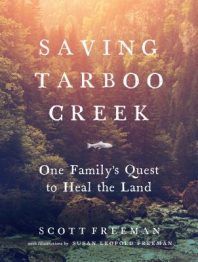 While I struggle to make time for occasional park visits, third and fourth generation Leopolds are putting these invaluable lessons about healthy growth, both personal and environmental, into practice. Scott Freeman is a UW biologist who, along with his wife Susan Leopold Freeman, has taken on the project of restoring a waterway on the Olympic Peninsula. They started by purchasing eighteen acres of disused, damaged farmland and have spent the past decade clearing, planting, and expanding their holdings in an attempt to bring the land back into balance. Through their efforts, and with the assistance of their children, they’ve brought fish and other wildlife back to where they always belonged. Their book, Saving Tarboo Creek, written by Scott and illustrated by Susan, describes the good they’ve done for the land and for their family by turning fallow fields into forest:
While I struggle to make time for occasional park visits, third and fourth generation Leopolds are putting these invaluable lessons about healthy growth, both personal and environmental, into practice. Scott Freeman is a UW biologist who, along with his wife Susan Leopold Freeman, has taken on the project of restoring a waterway on the Olympic Peninsula. They started by purchasing eighteen acres of disused, damaged farmland and have spent the past decade clearing, planting, and expanding their holdings in an attempt to bring the land back into balance. Through their efforts, and with the assistance of their children, they’ve brought fish and other wildlife back to where they always belonged. Their book, Saving Tarboo Creek, written by Scott and illustrated by Susan, describes the good they’ve done for the land and for their family by turning fallow fields into forest:
Years later, virtually all of the trees that survived their first few years in the pasture finally began to get broad enough to start shading out the grass below. It will still be many years before the canopy closes in the pasture and the grasses begin to be replaced with shade-loving forest herbs, shrubs, and ferns. But now, the seedlings’ roots are thick and broad enough to provide a strong foundation and win the competition for soil nutrients and water. We no longer have to maintain the restoration; it maintains itself. At the tipping point when the saplings begin to win and the grasses and invasives begin to lose, restorationists say, “The trees are free to grow.”
I like that phrase. It’s a goal in land stewardship that’s parallel to the goal Susan and I had as parents. We wanted to raise our boys, like these trees, so they got to that tipping point and no longer needed our care. Thereafter, they were strong and independent. They were free to grow.
Stake a few plants for the sake of my kids? I can get behind that. I’m not promising to transform the landscape the way these writers have (and I don’t plan to cut down my reading time), but I hereby pledge to get some dirt under my fingernails. Right now I only have a window box to work with, but that’s a start.
James Crossley is a bookseller and blogger at Island Books on Mercer Island. He admires GBH plumage in whatever form it takes.
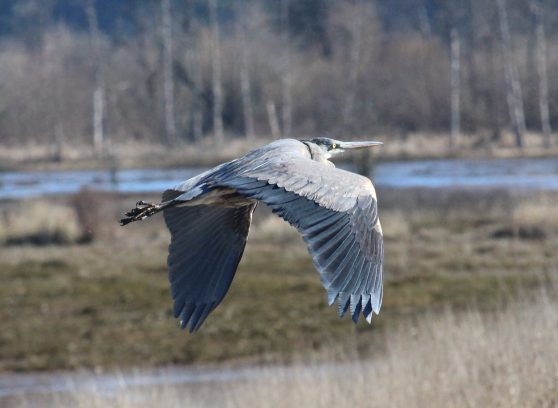


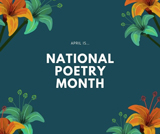
Delightful article, James. I stood and watched a GBH this morning with all the patience I possess. Possibly a thimbleful. Those birds are endlessly patient as they await the perfect speciman, the correct angle and the coiled energy necessary to spear their breakfast. Thanks for all the good book tips, including some great oldies. I plan to take a look at Crossley.
Thanks, Susan. The thing I like about the Crossley guides (other than the name) is that they show each bird in all the conceivable positions and habitats in which you might find them in the wild—in flight, at rest, near, far, etc. Puts them in context and makes them easier to identify. Not all of their books are readily available in the US, but I bet your local indie bookstore would be happy to help you track them all down.
I know specimen was not spelled correctly above. There are certainly many specimens, not just one. 🙂